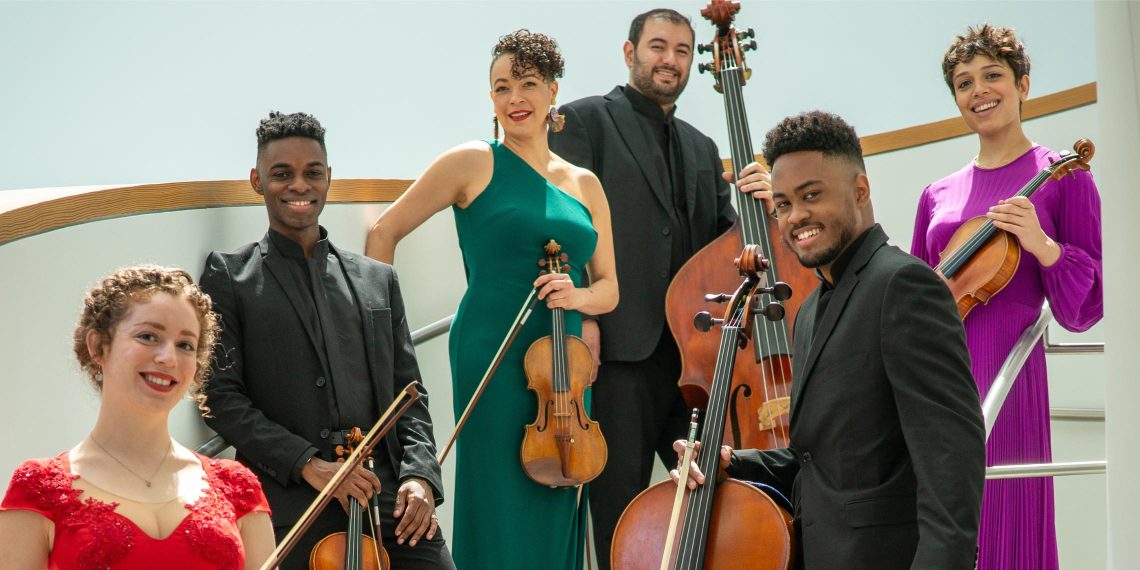
Sphinx Virtuosi: Bringing New Life to Classical Music
Recommended Grades: K–12 | Engagement Date: February 2026
Directions for the Teacher
This guide introduces students to Sphinx Virtuosi, an exceptional chamber orchestra of 18 professional string players. Students will explore musical expression, cultural influences, and performance techniques through curated video performances.
Responses can be adapted for all ages and abilities through speaking, writing, movement, or creative projects.
Watch & Listen
Engage students with these performances by Sphinx Virtuosi, showcasing dynamic string repertoire and expressive musicianship.
“Mourinho” – Ricardo Herz, performed by Sphinx Virtuosi
Notice the energy and rhythmic drive in this contemporary string piece.
“Finale furioso” from Concerto for Strings – Ginastera, performed by Sphinx Virtuosi
Experience the intensity and technical brilliance of this orchestral finale.
Discussion Prompts
- What emotions or images do these pieces evoke for you?
- How do the musicians use dynamics and tempo to shape the mood?
- What similarities and differences do you notice between the two pieces?
- How might the cultural background of a composer influence their music?
Activities & Extensions
- Rhythmic Exploration: Clap or play simple rhythms inspired by the music and discuss how rhythm affects the energy of a piece.
- Creative Response: Draw or write about how the music makes you feel or what story it might tell.
- Instrument Study: Research the string instruments used in these performances and share what makes them unique.
- Movement: Create movements or gestures that express the changing moods and energy of the pieces.
Relevant Standards
- MU.K.C.1.2: Identify various sounds in a piece of music.
- MU.K.O.3.1: Respond to music to demonstrate how it makes one feel.
- MU.3.C.1.3: Identify families of orchestral and band instruments.
- MU.4.C.1.2: Describe, using correct music vocabulary, what is heard in a specific musical work.
- MU.68.H.1.1: Describe the functions of music from various cultures and time periods.
- MU.68.C.1.1: Develop strategies for listening to unfamiliar musical works.
- MU.912.H.1.1: Investigate and discuss how a culture’s traditions are reflected through its music.
- MU.912.C.1.1: Apply listening strategies to promote appreciation and understanding of unfamiliar musical works.
- MU.912.O.3.1: Analyze expressive elements in a musical work and describe how choices support the composer or performer’s intent.
- SS.2.A.2.8: Explain the cultural influences and contributions of immigrants today.
- SS.8.A.1.7: View historic events through the eyes of those who were there as shown in their art, writings, music, and artifacts.
- SS.912.H.1.2: Describe how historical events, social context, and culture impact works in the arts.
| ‹ Educational Resources | ‹ Previous Guide | Next Guide › |
